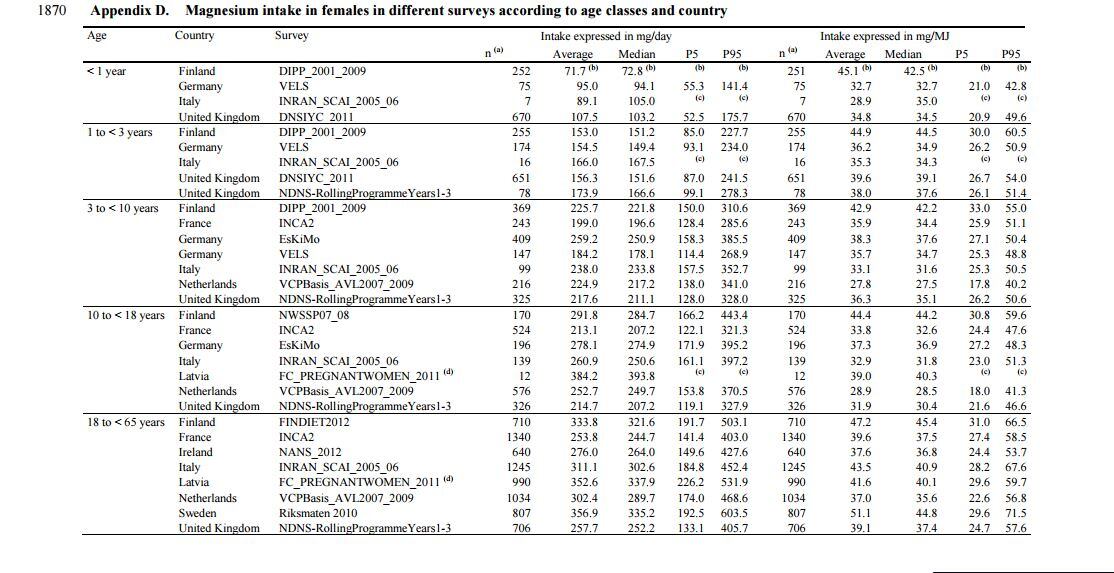Stakeholders have until June 7 to comment on the opinion on a nutrient involved in key enzymatic processes and synthesis of “carbohydrates, lipids, nucleic acids and proteins as well as for actions in various organs in the neuromuscular and cardiovascular systems.”
The European Food Safety Authority’s Panel on Dietetic Products, Nutrition and Allergies (NDA) proposed adequate intakes (AIs) based on 13 intake surveys in healthy populations in nine EU countries.
Proposed adequate intakes for magnesium
* Including pregnancy and lactation
Intakes from bottled and other water sources were noted as potentially significant.
Magnesium has won claims under the EU nutrition and claims regulation (NHCR) for the maintenance of normal bone, teeth, and protein synthesis; the reduction of tiredness and fatigue; electrolyte balance; normal energy-yielding metabolism; neurotransmission, and muscle contraction.
Magnesium sources include nuts, whole grains and grain products, fish and seafood, several vegetables, legumes, berries, banana, and some coffee and cocoa drinks.
Magnesium deficiency can cause hypocalcaemia and hypokalaemia, leading to neurological or cardiac symptoms when it is associated with marked hypomagnesaemia.
60% of bodily magnesium content is stored in bone, another 25% in muscle.
An AI is the value estimated when a Population Reference Intake (PRI) cannot be established because an average requirement cannot be determined. An AI is the average observed daily level of intake by a population group (or groups) of apparently healthy people that is assumed to be adequate.
A PRI is the level of nutrient intake adequate for virtually all people in a population group.
More about the differences between AIs and other measures can be found here .

